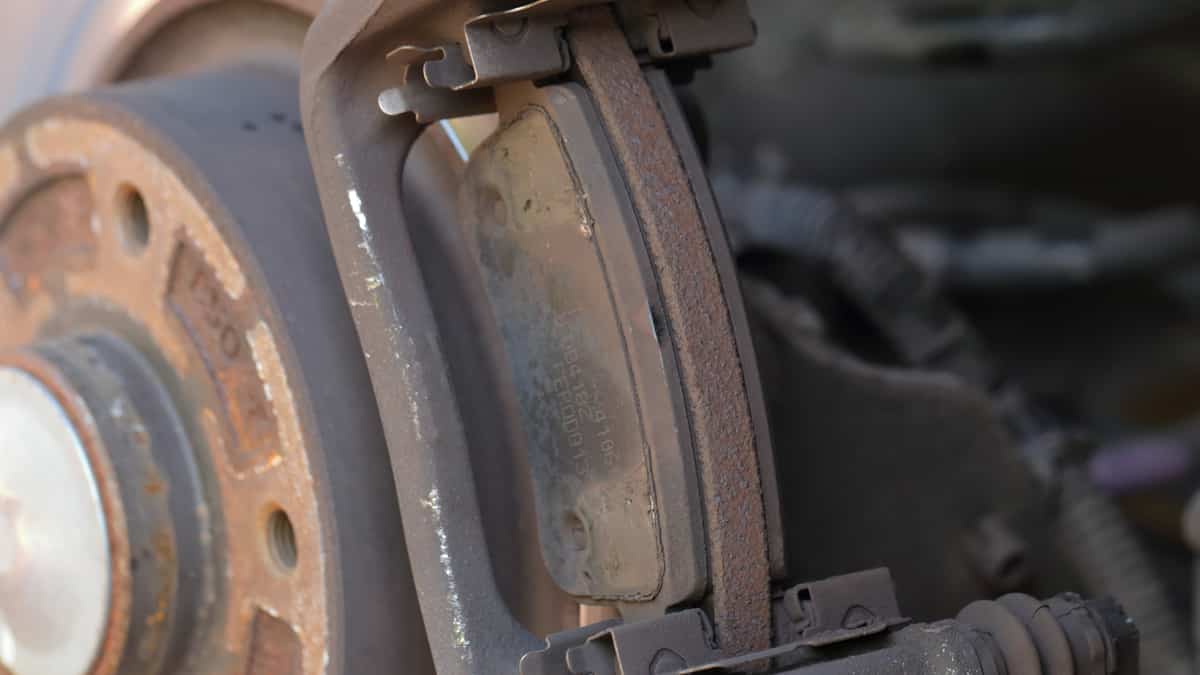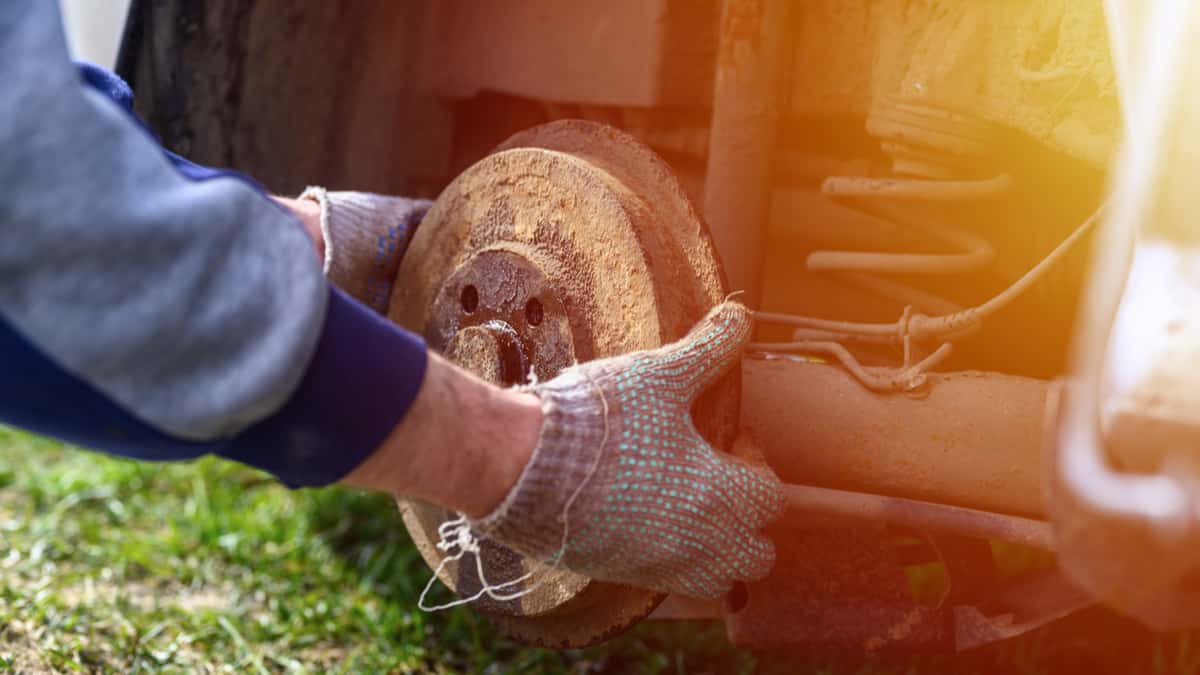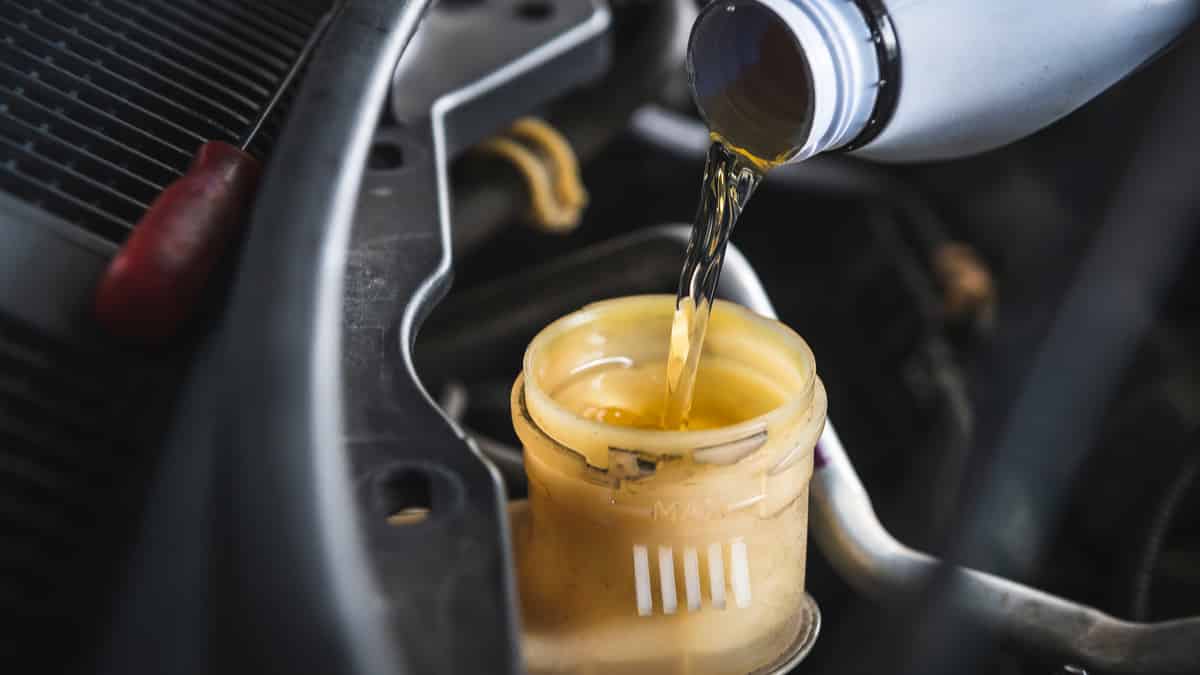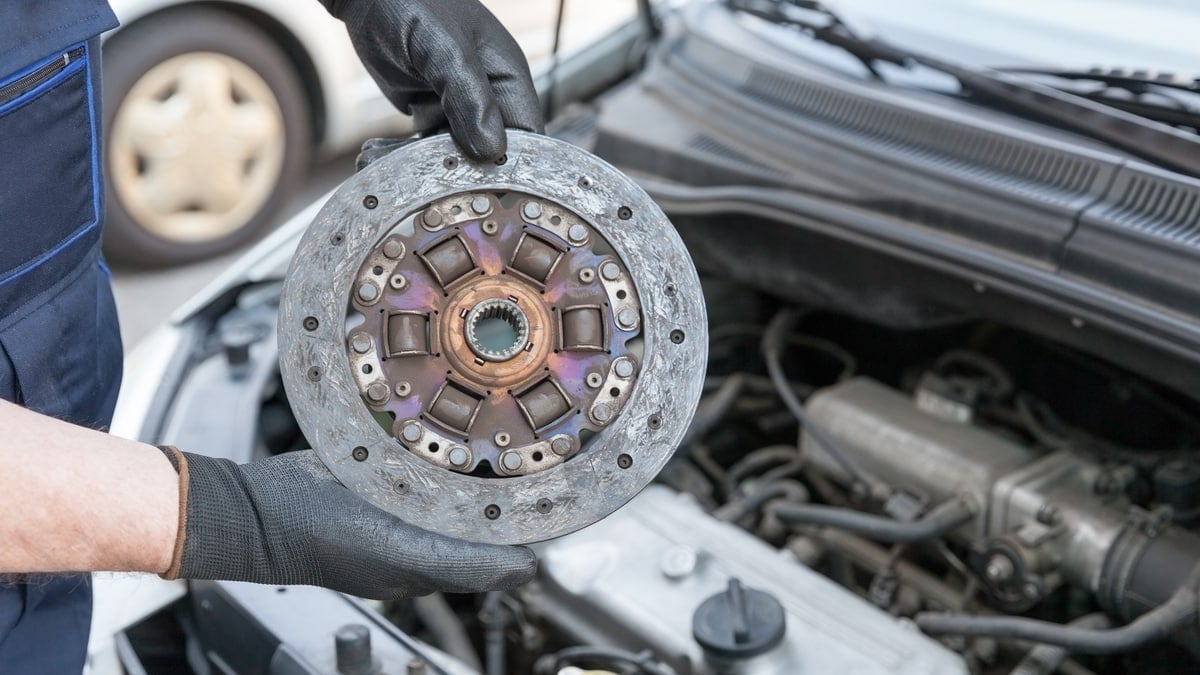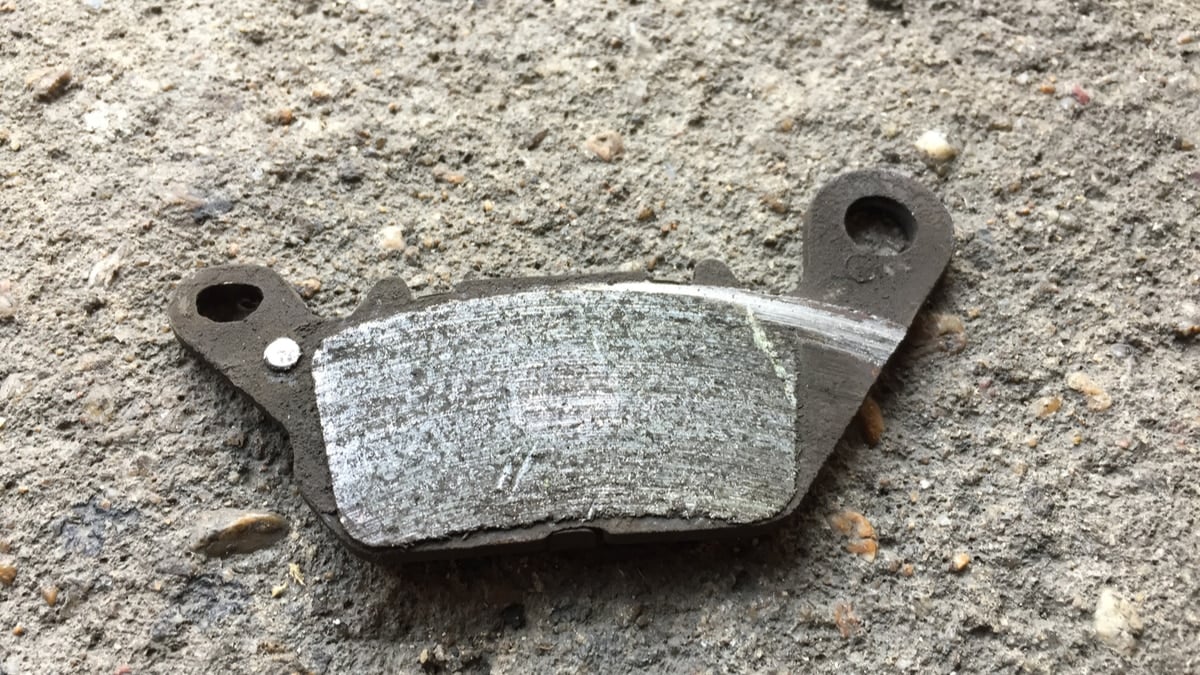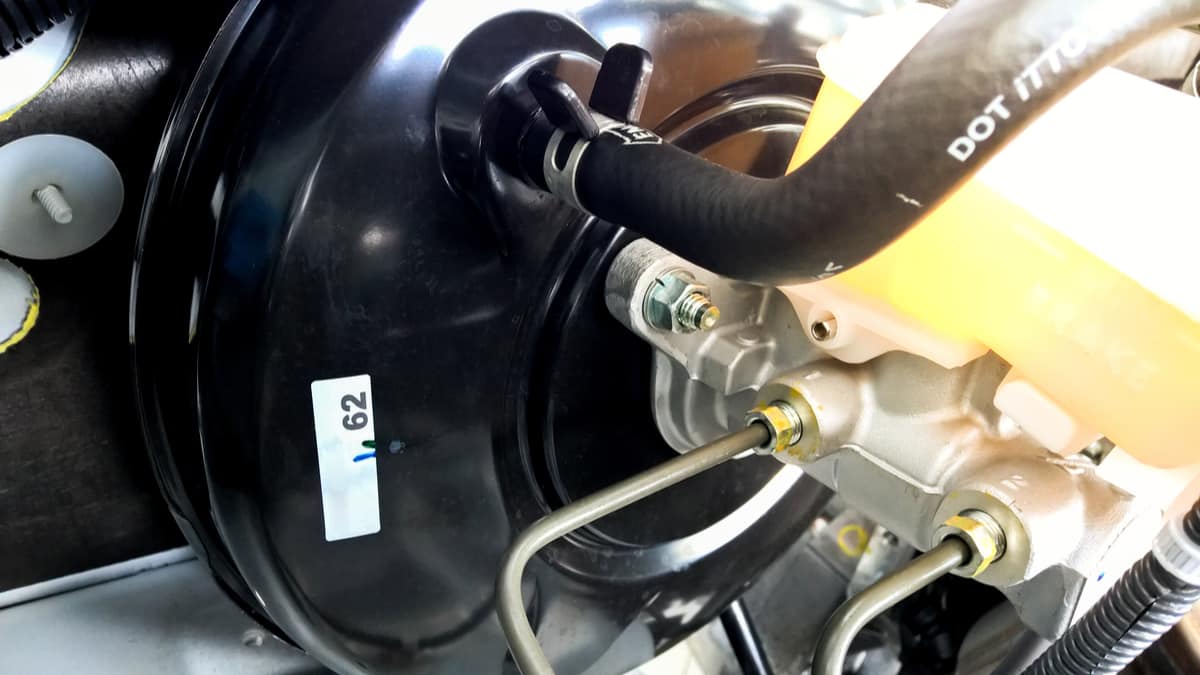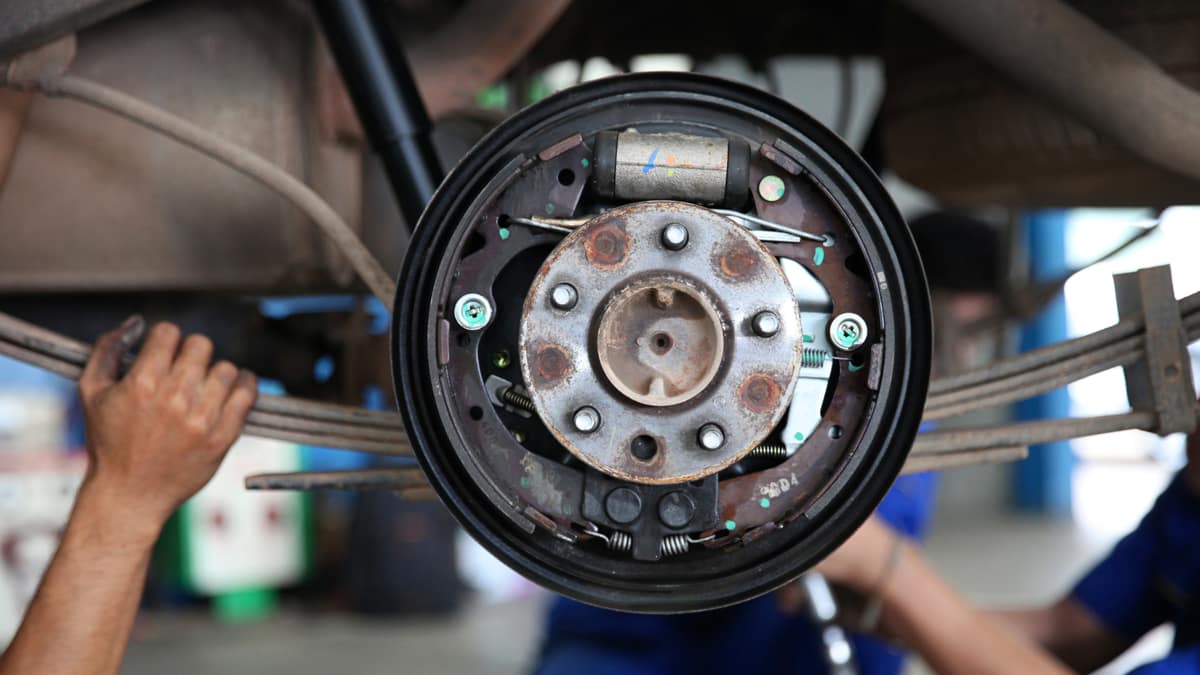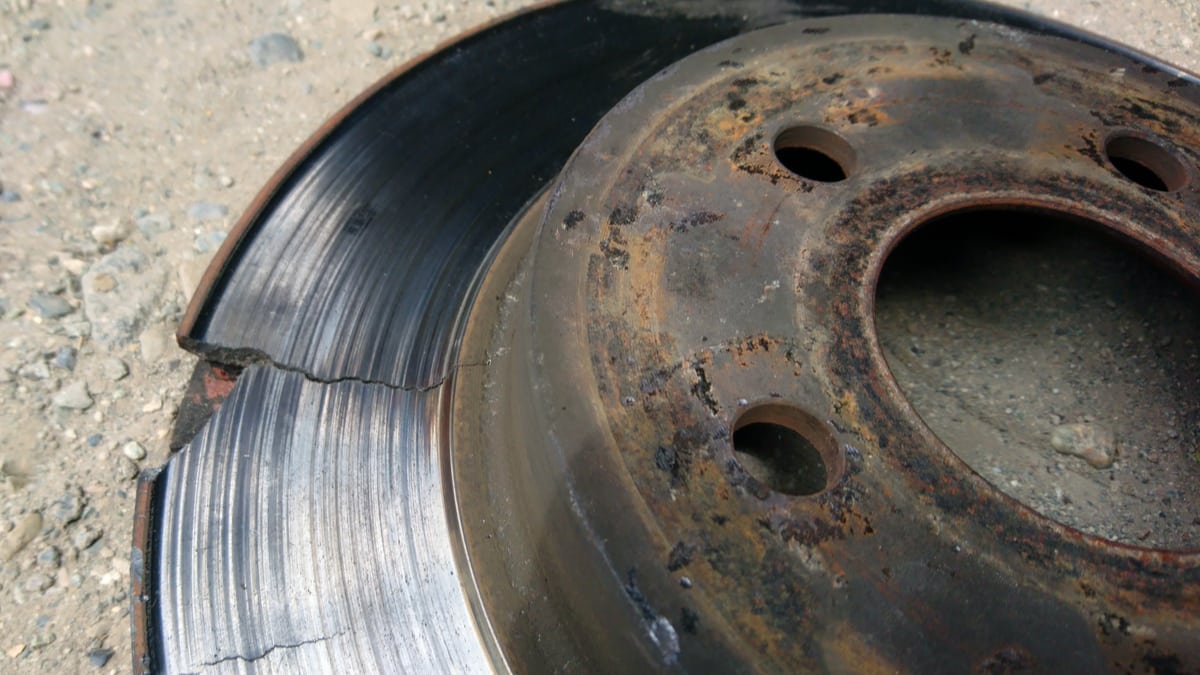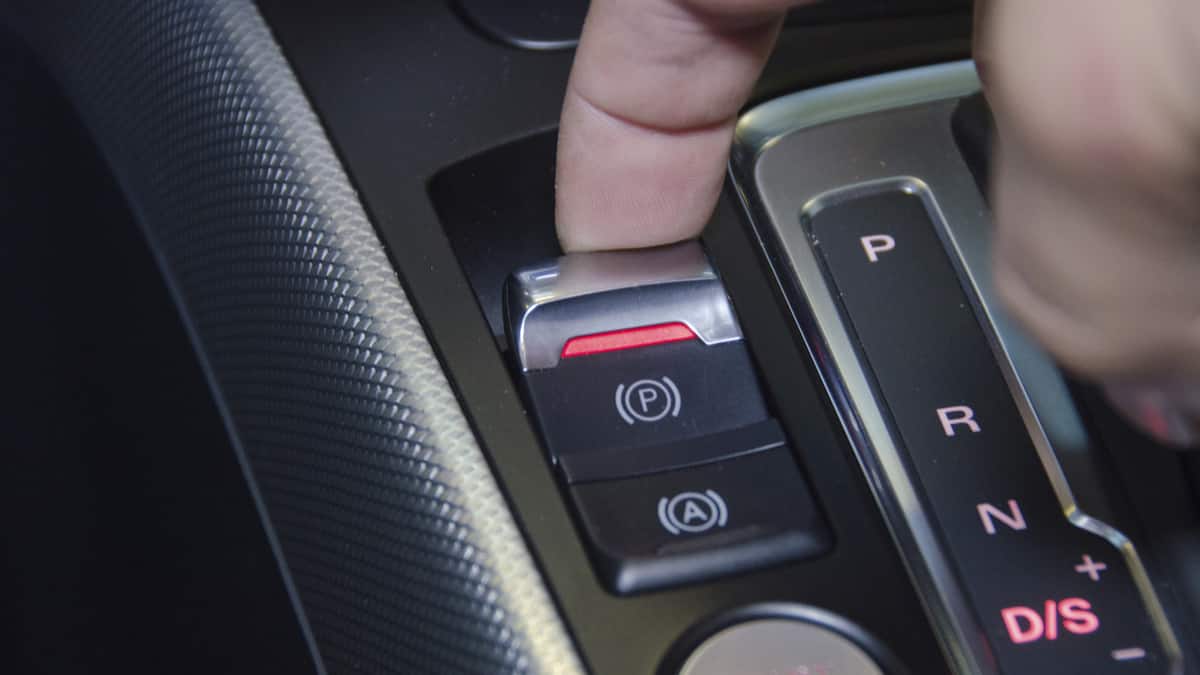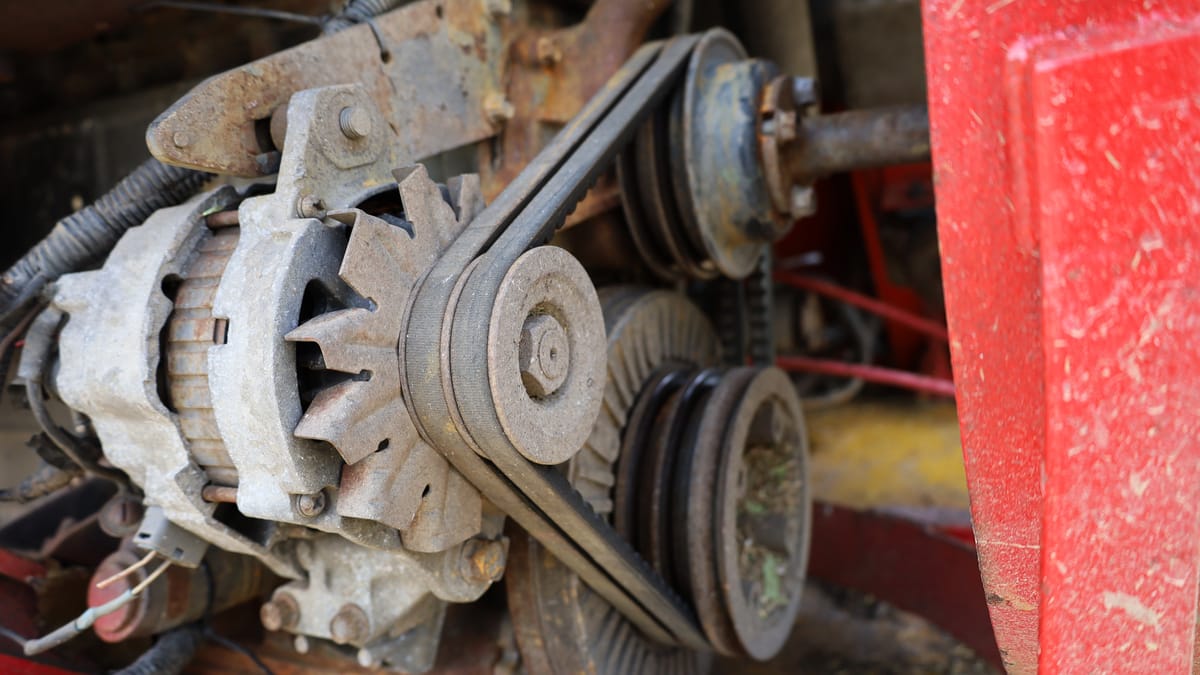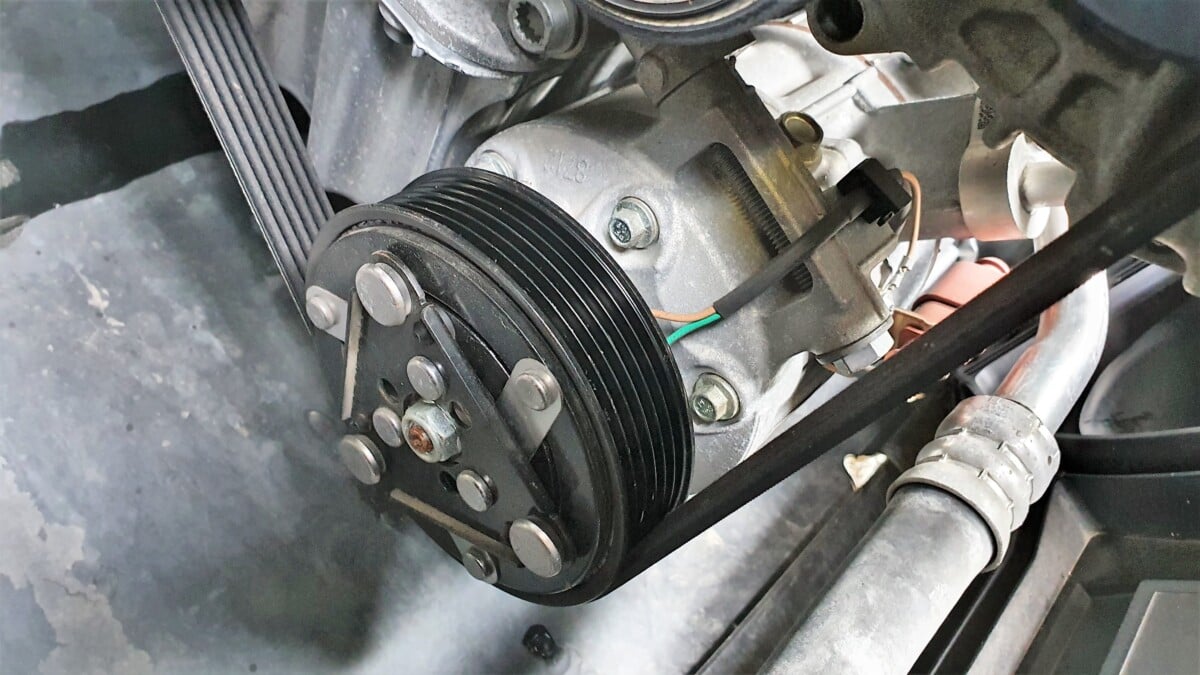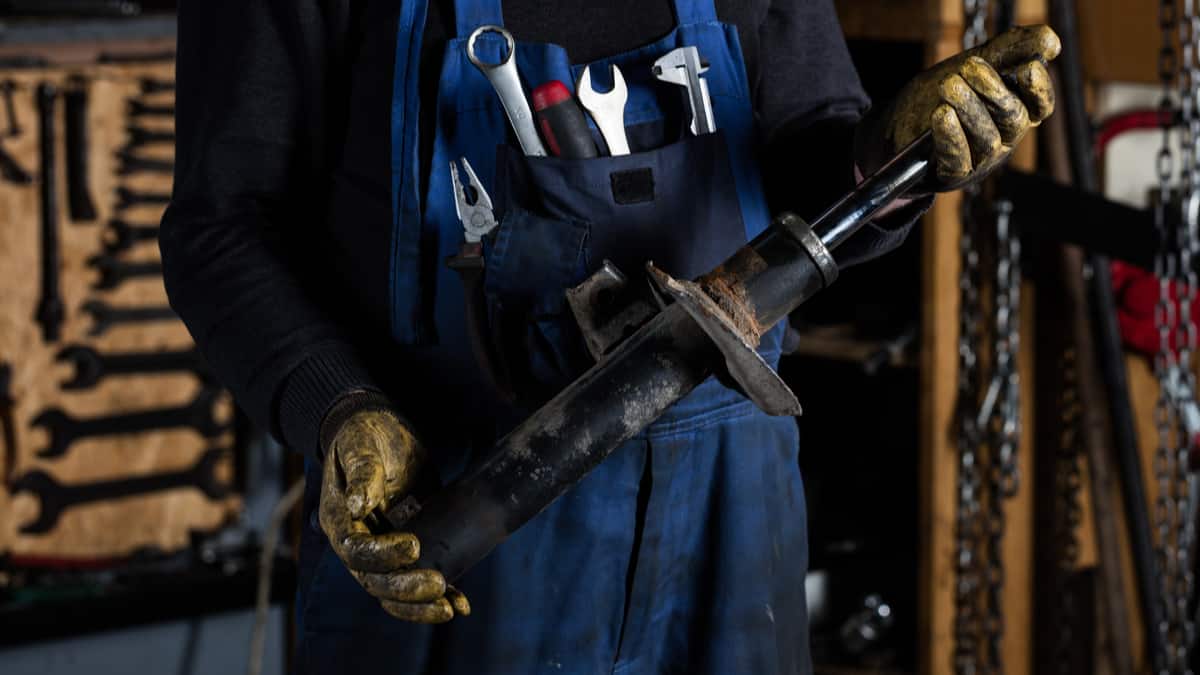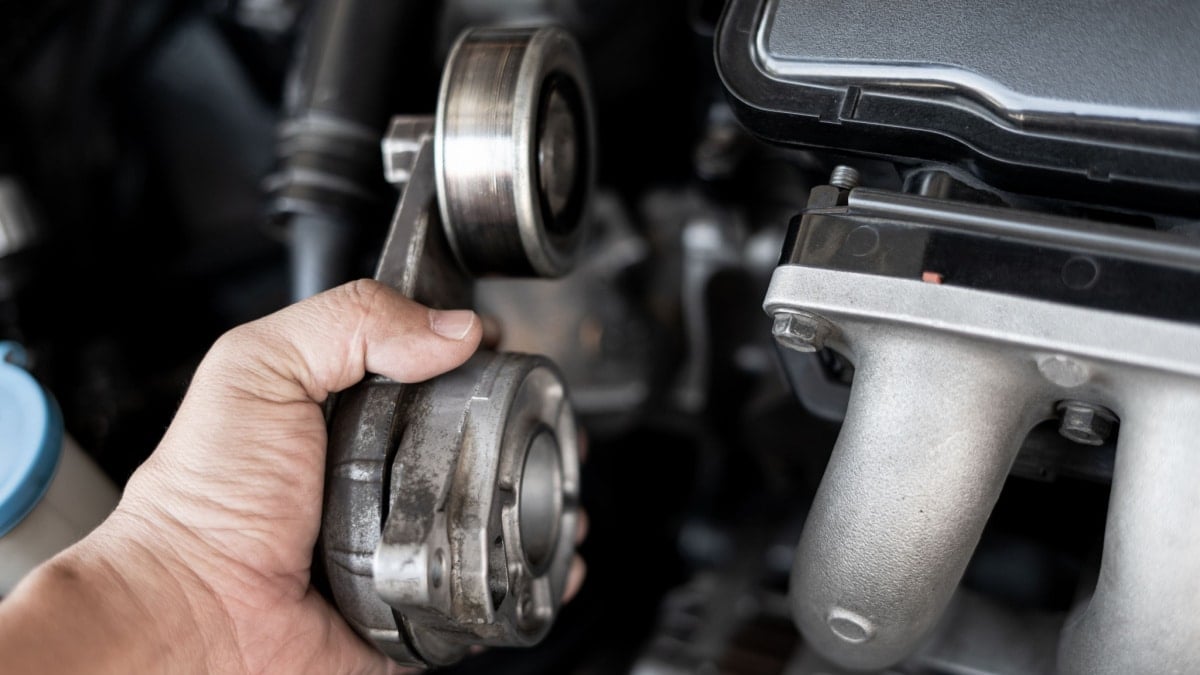The brake system is one of the most important on the vehicle because it ensures you stop fast enough to avoid accidents. If your vehicle has disc brakes, it’s imperative to know the symptoms of worn or bad brake pads before driving becomes dangerous.
This guide reveals the top bad brake pad symptoms, looks at this part’s purpose and explains where they can be found. We also evaluate how to check the brake pads, examine the average replacement cost and answer a few of your top questions.
Symptoms Of Bad Or Worn Brake Pads
When the brake pads wear down, you will hear a noise when pushing on the pedal. The wear indicators become exposed and you may see a dashboard warning. You may also feel a soft or spongy brake pedal, notice decreased or uneven braking power and have trouble with the parking brake.
Let’s evaluate the seven most common signs that the brake pads are bad.
1. Noise When Braking

The most common symptom of bad brakes is noise. As the brake pads wear thin, you will start to hear a squeaking sound that is meant to get your attention. If you replace the brake pads when they start squeaking, you shouldn’t need to endure any louder noises.
However, if you ignore this warning sign, the brakes will eventually begin grinding. By now, the worn brake pads may be causing damage to the rotors as well. At this point, you must take immediate action to ensure that your car’s braking capacity isn’t diminished.
2. Wear Indicator
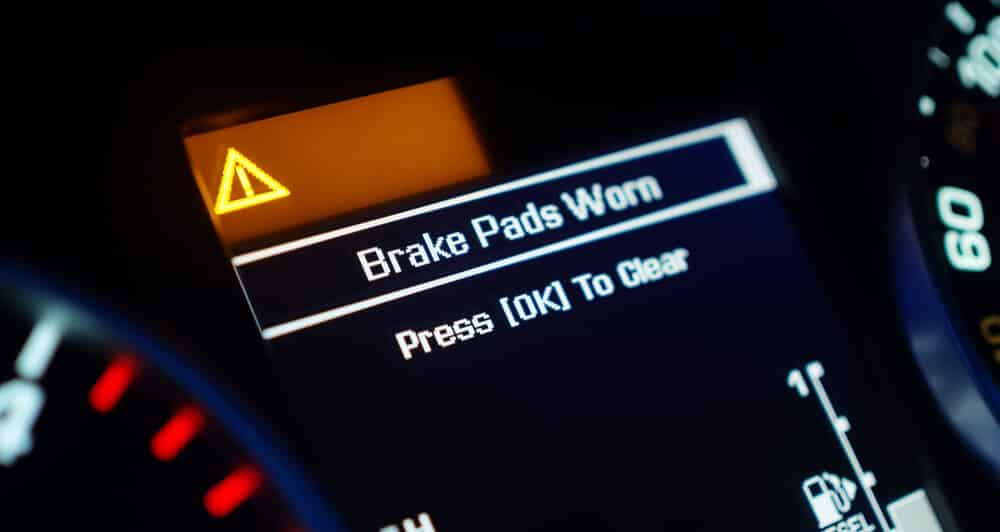
Brake pads have several types of wear indicators. First, there are the indicators installed on the brake pads, resembling metal tabs. These protrude when the brake pad material gets too thin and are responsible for creating that squeaking sound you hear.
Some cars also have an indicator on the dashboard. As the brake pads reach a certain thickness level, you will see a brake pad wear indicator light. Check your owner’s manual to find out if your car has this alert.
3. Soft Or Spongy Brake Pedal

When you step down on the brake pedal, it should feel firm and responsive. If the pedal begins to feel soft or spongy, your brake pads are probably worn. While the brakes should continue working, you are going to need to apply more force for the same result.
However, spongy brakes can also be caused by air in the system or a bad master cylinder. There could also be a leak somewhere, so you want to inspect the whole system.
4. Decreased Braking Power
You may also have trouble getting the same level of performance out of your brakes. If the stopping times are increasing, it’s time to think about replacing the brake pads.
This can also be the result of mechanical issues, such as a bad master cylinder. That’s why it’s important to check the entire braking system before replacing parts.
5. Vibrating Brake Pedal
There’s an even more alarming symptom of bad brake pads. If you push the pedal down and it starts to vibrate, you are naturally going to be concerned.
In some cases, this means that the rotors are no longer smooth, probably from driving with worn brake pads. In this instance, you would need to replace both the brake pads and the rotors.
6. Parking Brake Issues (Rear Pads)
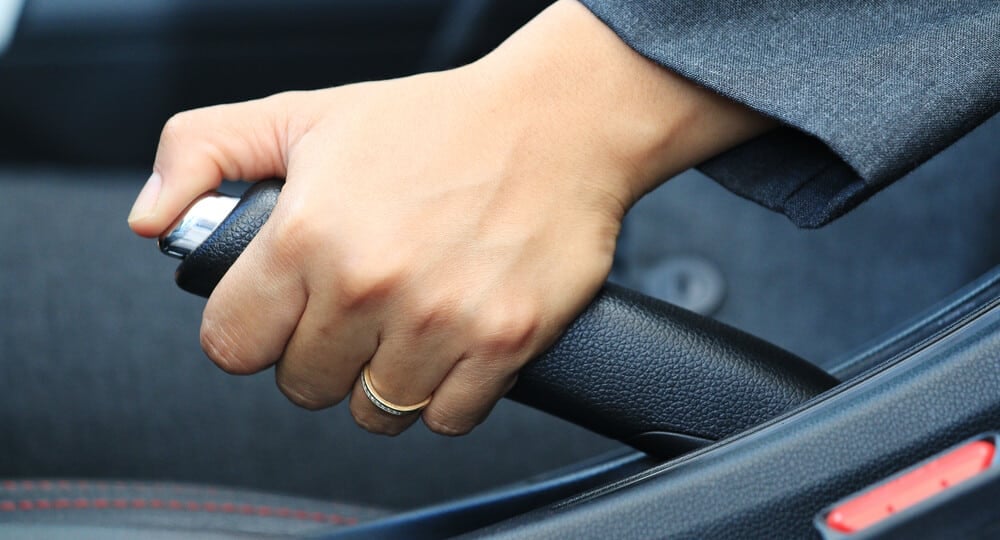
The parking brake is situated on the rear brakes, so if you have disc brakes, it’s going to rely on the pads. When the pads start to wear, you may have trouble with this parking brake as well.
You may notice that it doesn’t have as much grip as it once did. However, parking brake problems can be from numerous issues, so it’s important to perform a complete inspection.
7. Uneven Braking Power
In normal situations, the brake pads are going to wear uniformly, so there should be equal force applied on both sides. However, if one set of pads becomes glazed or gets contaminated with grease or fluid, you may notice the car pulling to one side while braking.
The trouble with this symptom is that there could be even more serious issues at hand. For example, when a brake caliper seizes, it causes the same pulling sensation.
What’s The Function Of The Brake Pads?
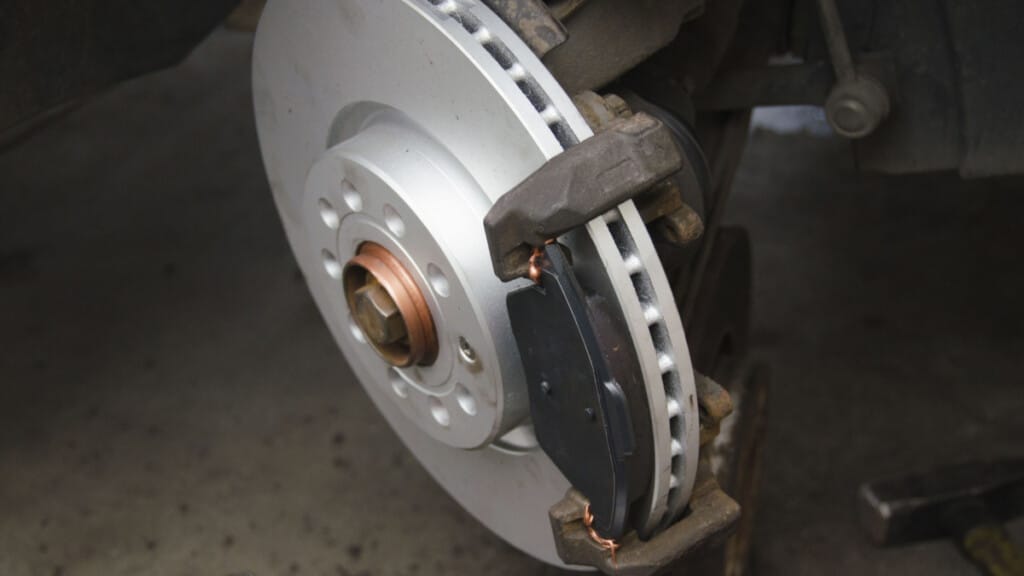
Automotive braking systems come in two different variations. Your car can have disc or drum brakes. It can also use a mixture of both, with some vehicles using disc brakes on the front and drums on the rear.
The brake pads have a simple job. When you push down on the pedal, pressurized hydraulic fluid is sent from the master cylinder to the calipers to provide force. The calipers push on the brake pads to squeeze them against the brake rotor. This friction is what stops your vehicle.
These pads have a solid steel backing plate where the friction material is bonded. Brake pads can be purchased in three different types, based on the material they are made from.
- Non-metallic (organic): These pads are made from a variety of synthetic materials. They may include sintered glass, cellulose, aramid and other compounds. These are quiet because of the soft material. They also aren’t hard on the rotors, but don’t tend to last as long as others.
- Semi-metallic: These pads are made from a combination of non-metallic compounds, along with steel, iron and copper. These are going to last longer than the organic brakes but can be noisy. They also create more wear against the rotors.
- Ceramic: These pads are made from porcelain and clay with copper fibers. The result is quieter stopping and a longer wear life. However, these brake pads cost more than the others.
Where Are The Brake Pads Located?
Depending on how your car is configured, you may notice brake pads on just the front or on all four wheels. If there are only brake pads on the front wheels, the back will be fitted with drum brakes instead.
The pads fit in the caliper, with the friction material facing the brake rotor. Each caliper holds two brake pads, an inner and an outer. Therefore, four-wheel disc brakes include eight brake pads.
How Do You Inspect The Brake Pads?

There are multiple ways to check the brake pads. The first thing to do is pay attention to the symptoms. If you are noticing the symptoms above and it has been a while since the pads were changed, it might be time for a replacement. Here are some helpful tips to consider.
- Look through the wheel. If you don’t want to take the wheels off, you may be able to see the brakes through the spokes. Use a flashlight to get a good look at the thickness remaining. If the pads appear too thin (less than ¼”), you should take the wheels off for a further inspection.
- Examine the wear indicator. With many brake pads, there’s a slot down the middle of the material. If the slot has disappeared or isn’t very visible, you should change the pads.
- If you take the brake pads off, you can get a better look at them. Measure the pad’s thickness. If it is less than ¼” thick, it’s time to swap them out.
- If you notice that the brake pads have worn unevenly, you should make sure the caliper is sliding properly and that the brake rotors aren’t warped. If you reinstall new brake pads with these other defects still occurring, you will likely ruin the new set too.
Most home mechanics feel comfortable changing brake pads. If there seem to be larger issues or you are unsure of the proper procedures, it’s best to visit with a professional. As mechanics ourselves, we know how easy it can be to make a small mistake that affects braking power, so it’s not worth taking any chances.
How Much Does It Cost To Replace The Brake Pads?
On average, you may spend $75 to $400 to have the brake pads replaced, depending on the car make and model, as well as local labor costs. Expect to spend $30 to $100 on the parts and another $45 to $300 for the labor.
It’s typically more expensive to replace the front brake pads than the rear. However, you may need to have all four replaced, which would change the price. If you need to have the rotors resurfaced or replaced, that also adds more money to the job.
Should I replace rotors with pads?
The rotors require less frequent replacement than the pads. If the surface of the rotors is still smooth and there’s plenty of thickness, you don’t need to replace them during the brake pad job. However, if the rotors are warped or uneven, it’s time to either resurface or replace them.
Can I drive with bad brake pads?
No, the brake pads must have plenty of thickness left to ensure you can stop on time when you push down the pedal. As the brake pads wear, stopping distances can be increased. In severe situations, you could lose braking power altogether, so this isn’t something to mess around with.
How long do brake pads last?
On average, you can get anywhere from 30,000 to 70,000 miles out of a set of brake pads. If you do a lot of stop-and-go driving, you will go through brakes more often than drivers on the highway. Additionally, ceramic brakes tend to last the longest but are also the most expensive.
What do worn-out brake pads sound like?
When the brake pads first wear down, you may hear a squeaking or squealing sound. This is the first indication that you need new brake pads. If you let it go longer, the brakes may start to grind because the metal material is making contact with the rotors. You shouldn’t wait any longer to change the brakes at this point.
How many hours does it take to replace brake pads?
If you are skilled at changing brake pads or you take the vehicle to a mechanic, it shouldn’t take more than an hour to replace them. However, if you need to replace the brake rotors at the same time, you will need to allow for some extra time and money.
As a car owner, you will need to replace the brake pads at some point. These maintenance parts are meant to be changed every 30,000 to 70,000 miles, depending on how you drive and the type you install.
For that reason, it’s best to understand the symptoms that could occur, so you can change the brakes at the first sign of a problem. If you let them go, you are only setting yourself up for some form of brake failure or impediment, as well as more expensive repair bills.
Categories: Brakes
